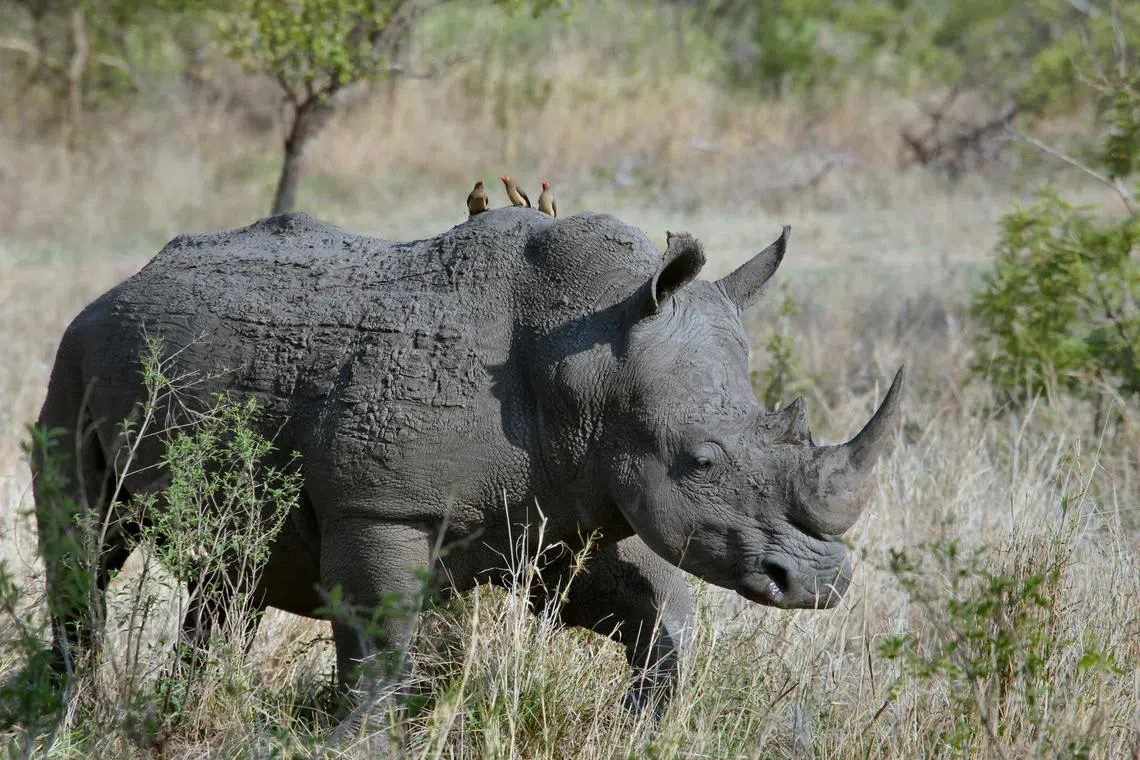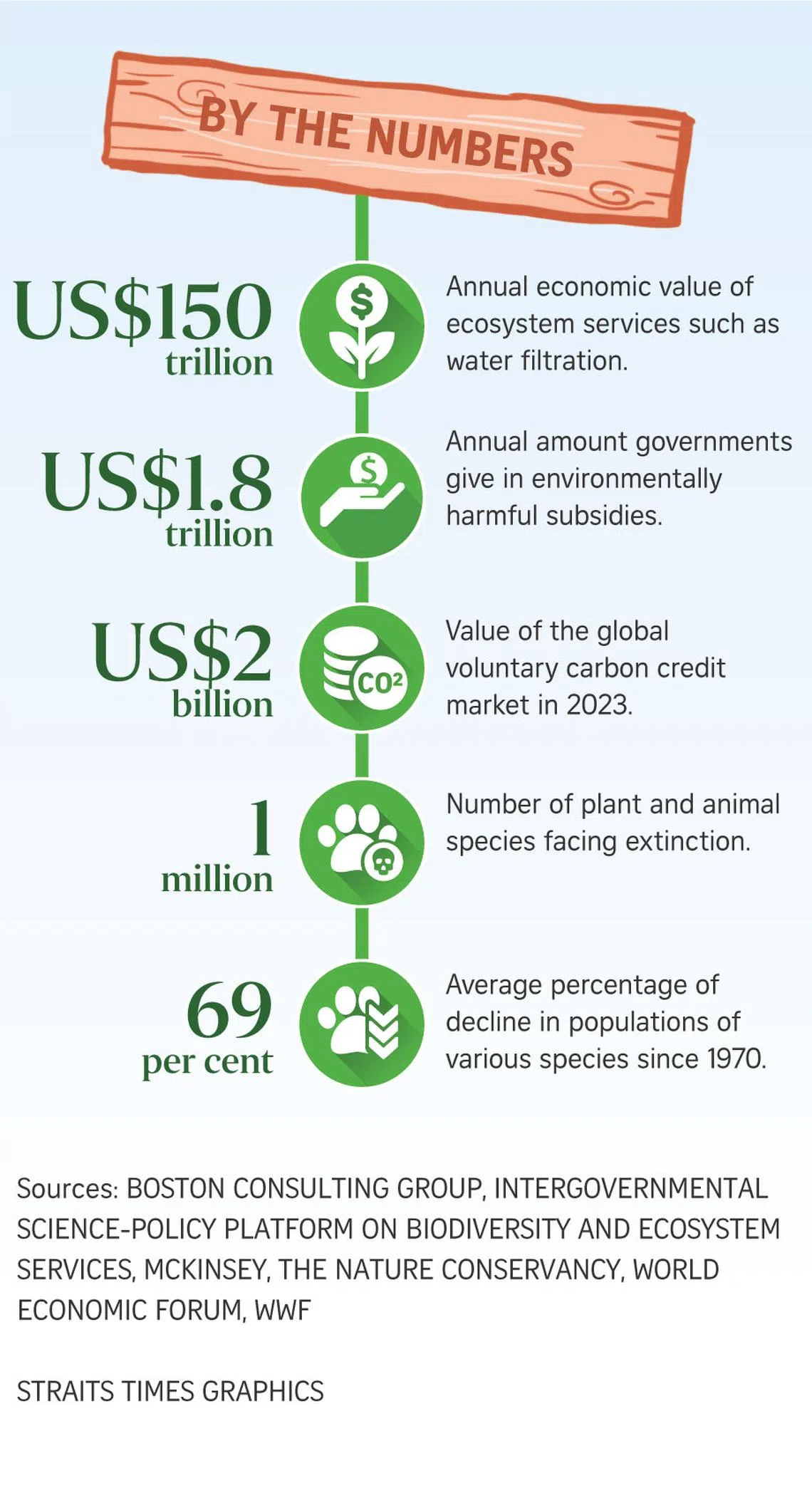Can money grow on trees? Rhino bonds, biodiversity credits among new ways to pay for nature
Sign up now: Get ST's newsletters delivered to your inbox

New financial tools and products are being developed to narrow the funding gap in the conservation movement.
PHOTO ILLUSTRATION: UNSPLASH
Follow topic:
SINGAPORE – Restoring nature after decades of destruction is often hampered by a lack of funds.
However, with increasing global recognition of the deep connections between healthy ecosystems, a thriving economy, and improved human health and well-being, new financial tools and products are being developed to narrow the funding gap.
The Straits Times highlights the financial instruments that are putting new wind into the sails
1. Debt-for-nature swops
These deals involve cancelling parts of developing countries’ debt in exchange for commitments to invest in conservation projects.
Such swops alleviate two problems for the developing countries – heavy debt burdens and a lack of funding for conservation.
They enable the countries to redirect funds originally earmarked for debt repayment to nature conservation efforts.
In July, the US government said it would forgive US$35 million (S$45.5 million) of Indonesia’s debt

2. Nature bonds
Nature bonds are a broad category of loans to fund nature conservation efforts. Some examples include blue bonds, nature-performance bonds and rhino bonds.
Blue bonds
The funds raised are channelled towards the protection of oceans, such as establishing marine protected areas or improving fisheries management. These bonds have been issued by the Asian Development Bank to finance projects in Asia and the Pacific.
Nature-performance bonds
Borrowers achieve specific nature-related targets to earn rewards in the form of reduced costs. This could include lower interest rates or a decrease in the total amount owed.
In August, the World Bank sold a nine-year, US$225 million note that will help raise funds for reforestation in the Amazon
Rhino bonds
A first-of-its-kind financial instrument debuted by the World Bank in 2022, this bond aims to protect and increase the populations of the critically endangered black rhinoceros.
3. Carbon credits
Carbon credits are one of the more established financial mechanisms through which companies can contribute to nature conservation.
Each credit represents 1 tonne of carbon dioxide that has either been removed from the atmosphere or prevented from being released through projects such as forest conservation, tree plantations, or capturing planet-warming methane gas from landfills.
Companies can buy the credits to help meet their emission reduction goals, in addition to their own efforts to cut emissions. This creates a market for carbon credits, which aims to fund investments in poorer parts of the world, such as rainforest or mangrove conservation.
Singapore has outlined its plans to become a carbon services hub
4. Biodiversity credits
Biodiversity credits are tradable instruments that finance actions leading to measurable positive outcomes for nature. These actions include the conservation of specific species, natural habitats or ecosystems.
Investors fund projects that conserve nature, and in return, they sell credits to companies aiming to reduce their environmental impact. Each credit represents a unit of biodiversity being restored or preserved over a specified period.
For example, one credit could represent 1ha of land conserved over 10 years or a measurable improvement in biodiversity on 1ha per year.


